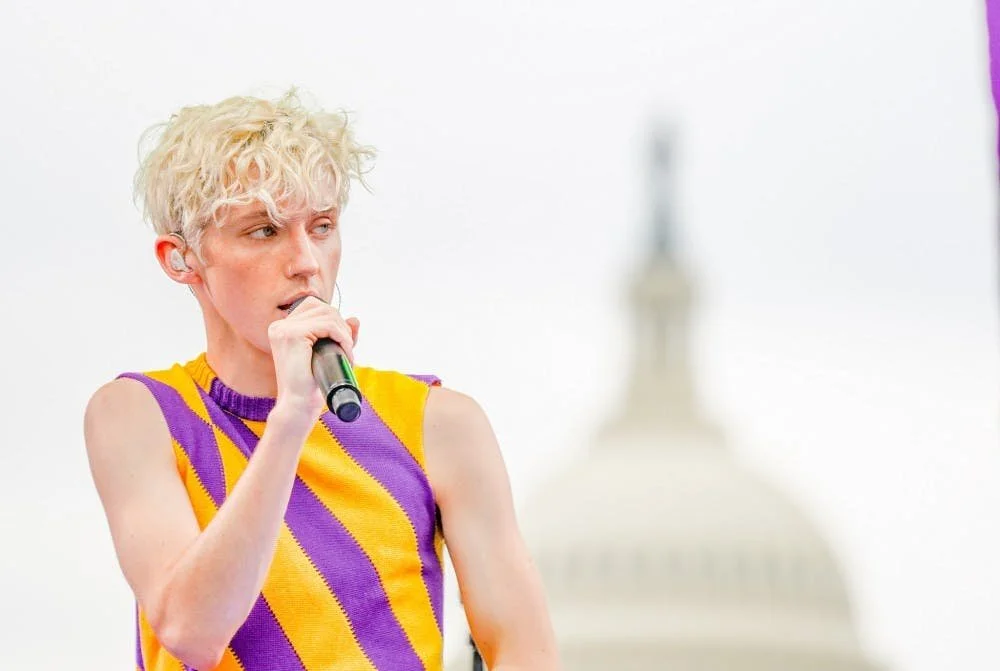Articles and Book Chapters
-
![]()
Sex Magic: Orgasm, Embodiment, and the Erotic Navigation of "The Circumstances" in "The Magicians"
Published in 2024.
Chapter 3 in Supernatural Youth in Media. Edited by Ilana Nash and Rebecca Hains. Boston: Peter Lang. pp. 45-62.Magic offers an invitation to consumers of popular media. Indeed, it inspires new ways of thinking and it illuminates new worlds. This chapter focuses on the popular fiction trilogy, The Magicians, authored by Lev Grossman, as well as its Syfy television adaptation of the same name. This chapter attunes, in particular, to the rhetorical characterization of sex as a conduit for and medium through which magic can be successfully deployed in the face of grave existential and transdimensional danger. Specifically, it explores “sex magic.” Sex is revealed by the television series to be a vital magical tool through which characters in The Magicians negotiate what Grossman defines as “the Circumstances.” Put briefly, magicians must have a firm grasp of their situational context to even cast magic, let alone successfully deploy its power to their advantage. This contextual focus invites a critical exploration of the ways that the Syfy series utilizes sex as an effective response—sometimes the only one—to the prevailing Circumstances that threaten the characters. I argue that this intersection of sex and magic in the The Magicians accomplishes four things for the viewing audience. First, it casts sex as foundational in the development of a magical mythology that embraces, rather than elides, the embodied act of sex. Second, it positions sex as a core mechanism for achieving one’s magical kairos—the appropriate, timely, and embodied rhetorical response to a situation. And third, it frames sex—and women’s orgasms, in particular—as vital to the embodied experience of magic specifically, and to life, more broadly.
Image Citation
https://www.imdb.com/title/tt4254242/. -
![]()
"Anthos," Bottoms, and Anal Sex in Troye Sivan's "Bloom"
Published in 2022.
Chapter 31 in The Routledge Handbook of Queer Rhetoric. Edited by Jacqueline Rhodes and Jonathan Alexander. New York: Routledge. pp. 258-265.Gay men regularly sort themselves and are sorted by others according to their (perceived) sexual preference. Little research has been done on these rhetorics. This chapter responds to this gap by attuning to the anal rhetoric of “bottoming” and “bottoms.” I do so by focusing on white, gay musician Troye Sivan’s song and music video “Bloom.” There is a need, too, for more robust connections between classical rhetorical concepts and contemporary queer rhetoric. Accordingly, this chapter’s analysis of Sivan’s rhetoric draws upon an ancient Greek term, anthos (“blossom,” “flower”). Anthos calls upon queer rhetoricians to consider the ancient practice of using floral metaphors to describe attractive young men. This chapter’s analysis reveals that Sivan’s botanical rhetoric is one with ancient roots. Sivan’s “Bloom” paints a lyrical, sonic, and visual portrait of an excited (yet nervous) man with an anus primed and ready for the queer act of pleasure, pain, and prostatic ecstasy known as “bottoming.” This chapter details three enthymemes through which Sivan constructs his rhetoric of bottoming in both “Bloom” and its music video: (1) a “blooming” lyrical enthymeme, in which Sivan deploys botanical metaphors as a means of calling a queer audience into being; (2) a “staccato” sonic enthymeme, in which Sivan incorporates rhythmic silencing as an invitation for these audiences to queerly imagine the physical act of bottoming; and (3) a “contrast” visual enthymeme, in which Sivan’s “twink” frame is colorfully juxtaposed against muscular torsos as an opportunity for audiences to (re) consider their notions of the types of men who bottom. These three enthymemes attune audiences to the act of receptive anal sex between two men and, consequently, invite contemporary queers to, over the course of the song’s three minutes and forty- five seconds, rhetorically (re-)construct their understandings of the identity of “bottom.”
Image Citation
https://www.theeagleonline.com/article/2018/10/troye-sivan-the-anthem. -
![]()
Modern Masculinities: Resistance to Hegemonic Masculinity in "Modern Family"
Published in 2021.
Co-written with Jennifer Y. Abbott. Journal of Contemporary Rhetoric 11, no. 1/2: 36-56.Since its debut in 2009, the ABC television show Modern Family has captivated audiences and academics alike. The show professes a modern perspective on families, but many scholars have concluded that its male characters uphold problematic, normative expressions of gender. In contrast, we use the concept of hegemonic masculinity to argue that Modern Family resists normative expressions of masculinity by attuning viewers to the socially constructed nature of hegemonic masculinity and by authorizing feminine and flamboyant behaviors as appropriately manly. These counterhegemonic strategies work in tandem to scrutinize confining expectations for men and to offer viable alternatives. Taken together, their coexistence mitigates against an oppressive hybrid version of hegemonic masculinity. Consequently, our analysis introduces readers to the rhetorical power of hegemonic masculinity and strategies to resist it; considers the efficacy of these strategies while drawing a wide audience; and stresses the importance of diverse gender representation in popular media.
Image Citation
https://abc.com/show/d72316e9-c889-494b-bb3c-a48266fb326d/about-the-show. -
![]()
Agnostic
Published in 2021.
Chapter 9 in A New Handbook of Rhetoric: Inverting the Classical Vocabulary. Edited by Michele Kennerly. University Park: The Pennsylvania State University Press. pp. 127-138.The ancient Greek grammatical construct of the alpha privative provides ample opportunities for contemporary rhetorical theorists and critics. This chapter explores the one such alpha privative marked concept: agnostic (without knowledge; unknown or unknowable) and details, in particular, a rhetoric of agnōstos erōs (unknowable love) as depicted in a 2019 episode of the sci-fi television series, Black Mirror. The episode, set in a not-too-distant future, centers on a Mortal Kombat-esque video game, Striking Vipers X , that can be played in virtual reality (VR). Importantly, this hyper-realistic VR technology, as one episode character reveals, “emulates all physical sensations.” This chapter’s exploration details how the episode’s two principal characters (Danny and Karl; both thirty-something Black men) engage in a lengthy affair in the game’s virtual reality while embodying their chosen avatars, Lance and Roxette, respectively. In doing so, I argue that Black Mirror offers an opportunity for rhetoricians to consider mediated depictions of unknowing. Indeed, there is a theoretical and methodological utility in the ancient Greek concept of agnōstos for rhetorical and media scholars as they continue to reckon with the new sensations, illustrations, and code of virtual reality, augmented reality, and artificial intelligence technologies.
Image Citation
https://www.theatlantic.com/entertainment/archive/2019/06/black-mirror-season-5-striking-vipers-review/590743/. -
![]()
Civic "Ekphrasis": Classical and Contemporary Description in the Public-Speaking Classroom
Published in 2020.
Communication Teacher. 34, no. 3: 210-215.This essay outlines an assignment and unit for undergraduate courses in Public Speaking. This assignment and unit aim to (1) illustrate the classical and contemporary utility of ekphrasis (“description”) as a genre of civic communication; and (2) introduce students to essential skills in public speaking, including invention, arrangement, and, in particular, style.
-
![]()
The "Coming Out" Sermon: Brandan Robertson at the National Cathedral
Published in 2020.
Chapter 8 in Rhetoric of the Protestant Sermon in America: The Pulpit at the Turn of the Millennium. Edited by Eric C. Miller and Jonathan J. Edwards. Lanham: Lexington Books. pp. 137-158.This chapter explores one rhetorical response to the United States Supreme Court’s landmark Obergefell v. Hodges ruling in 2015. The justices’ decision in this case, which enshrined GLBTQ+ couples’ rights to marry nationwide, sparked widespread celebration in GLBTQ+ circles and, too, resistance from conservative corners of the Christian faith. Four days after the court’s ruling, Washington’s National Cathedral held a Celebration of Marriage Equality. The event featured several speakers, including Brandan Robertson, the lead pastor of Missiongathering Christian Church in San Diego, CA. Robertson’s sermon argued that queer visibility in American sacred spaces is foundation to the continued progress of both the GLBTQ+ community and the Christian faith. This chapter utilizes the ancient rhetorical concepts of kairos (opportunity; appropriateness; right time or place), akairos (inopportune; inappropriateness; the wrong time or place), and metanoia (regret; remorse; transformation) to explore Robertson’s intersectional rhetoric. I focus in particular on the rhetorical power of “coming out” as a rhetorical strategy that can be marshaled by GLBTQ+ faith leaders. This strategy becomes particularly striking in the rhetorical place of a church and the rhetorical time of a sermon. Robertson’s rhetoric offers an important opportunity to explore the intersections of queer and Christian rhetoric and, too, to better understand the ways that contemporary rhetors marshal rhetorical time.
Image Citation
https://cathedral.org/discover/art-architecture/ -
![]()
Mary Magdalene, Digital Queer
Published in 2019.
Eidolon. August 20, 2019.Mary Magdalene is, today, something of a digital queer. Millennia ago, she was best known for being a woman follower of Jesus and in the centuries since has been regularly remembered for her (supposed) desires—erotic, romantic, spiritual. Was she a prostitute? Wife of Jesus? Repentant recluse? Apostle? It depends on who you ask and where you look. Mary now regularly appears on our smartphones, Twitter feeds, browser tabs, and other “smart” devices. We continue to live, as other generations did before us, in the midst of a mediated matrix of Magdalene. Taking advantage of the unprecedented technological affordances of modern platforms in order to extend her long history of reception, this 21st-century Mary Magdalene is remixed in music videos, as in Lady Gaga’s “Judas,” and is networked as a meme, as in a recently circulated GIF featuring RuPaul’s Drag Race contestant, A’keria C. Davenport — two examples that I analyze in this essay. These cultural artifacts exemplify Mary’s digital nimbleness—and, more importantly, they imbue her presence in contemporary media with provocative politics and performance.
Image Citation:
Sandys, Frederick. Mary Magdalene. c. 1858-1860. Wilmington: Delaware Art Museum. -
![]()
Children in Carts: Digital Rhetorics of Christian Commission and Capital
Published in 2018.
Critical Studies in Media Communication 35, no. 4: 319-333.Compassion International is a prominent Christian humanitarian organization. Working primarily via a digital platform, Compassion International aims to connect financially stable sponsors with impoverished global children. This essay deals with Compassion International’s online sponsorship platform as an illustrative case study of a neoliberal media ecology and the digital, humanitarian, visual, and Christian rhetorics therein. Compassion International’s sponsorship platform presents a triad of appeals that (re)imagine would-be sponsors as digital missionaries fulfilling God’s commission, as stand-in family members, and, ultimately, as consumers. Compassion International’s sponsorship model is digitally rendered via a marketplace platform in which children are placed into virtual shopping carts. Both children and Christian users are, this essay concludes, coopted by a digital rhetoric of capital.
-
![]()
Early Christian Rhetoric(s) "In Situ"
Published in 2017.
Advances in the History of Rhetoric [now published as Journal for the History of Rhetoric] 20, no. 2: 209-220.In the nineteenth and twentieth centuries, an unprecedented number of Gnostic manuscripts were unearthed at sites across Egypt. Discovered on the Cairo antiquities market, in ancient trash heaps, and in buried jars, these papyri have radically refigured the landscape of early Christian history. Rhetoric, however, has overlooked the Gnostics. Long denigrated as heretical, Gnostic texts invite historians of rhetoric to (re)consider the role of gender in the early Church, the interplay between gnōsis and contemporary rhetorical concepts, and the development of early Christian rhetorical practice(s) within diverse historical contexts, including the Second Sophistic. In response to recent calls for rhetorical archaeology, this essay returns to Cairo, Oxyrhynchus, and Nag Hammadi. These three locations refigure early Christian rhetoric(s) in situ.
-
![]()
Painted Lady: Aspasia in Nineteenth-Century European Art
Published in 2016.
Co-written with Michele Kennerly. Rhetoric Review 35, no. 3: 197-211.Despite pioneering reclamation efforts, feminist rhetoricians have only scratched the surface of the multilayered historical reception and representation of Aspasia, a fifth-century BCE Milesian woman famous for the company she kept. Aspasia’s penchant for historical perseverance means that her recovery must extend far beyond the ancient world. Throughout the centuries roused by the so-called Woman Question, she was on the lips and brush-tips of many on the lookout for antecedent and analogous women to serve as models or antimodels. Focusing on nineteenth-century Europe, we illustrate her powerful presence in art. Our discussion showcases Aspasia conversing (Nicolas-André Monsiau), instructing (Honoré Daumier), and contemplating (Henry Holiday). In their work Aspasia resists attempts to mute her colors and reemerges as a painted lady.
Image Citation:
Holiday, Henry. Aspasia on the Pnyx. 1888. Camden: Camden Local Studies and Archive Centre. -
![]()
Pinvention: Updating Commonplace Books for the Digital Age
Published in 2015.
Co-written with Michele Kennerly. Communication Teacher 29, no. 3: 166-172.This essay outlines a semester-long assignment undergraduate courses in Public Speaking, Speechwriting, Introduction to Communication, Rhetorical Criticism, and Communication and Technology. Utilizing the social media platform, Pinterest, this digital project helps students achieve the following objectives: (1) to organize digitally abundant sources during the research process (for multiple assignments over the course of a semester or for one only); (2) to visualize and spatialize their findings; and (3) to incorporate images and other non-traditional scholarly sources into their presentations or projects, or at least into their preliminary planning stages.










